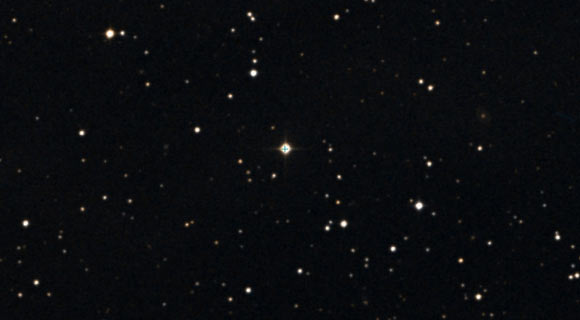Astronomers using data from the NASA Kepler spacecraft’s reborn K2 mission have discovered a planetary system containing at least three exoplanets, orbiting the K-type dwarf star EPIC 247589423. A paper reporting this discovery has been submitted for publication in the AAS Journals.
EPIC 247589423, also known as LP 358-348, is approximately 194 light-years away and 800 million years old, much younger than our Sun.
The star is a member of Hyades, a very large open star cluster located in the constellation Taurus.
“Based on EPIC 247589423’s Galactic position, the star lands 32-65 light-years from the cluster center and outside of the 16-light-year radius core, but still well within the broader population of Hyades members,” explained lead author Dr. Andrew Mann, an astronomer at the University of Texas at Austin and Columbia University, and colleagues.
The smallest and shortest period planet, dubbed EPIC 247589423b, is Earth-sized, making it the first Earth-sized planet found in a young cluster, while the two outer planets are much larger.
“The smallest planet has a radius comparable to Earth (0.99 Earth radii), making it one of the few Earth-sized planets with a known, young age,” the astronomers said.
“The two larger planets — EPIC 247589423c and d — are likely a mini-Neptune and a super-Earth, with radii of 2.91 and 1.45 Earth radii, respectively.”

EPIC 247589423 (center). Image credit: Centre de Données astronomiques de Strasbourg / SIMBAD / DSS.
All three planets orbit their star in less than 30 days (at periods of 7.9, 17.3, and 25.6 days), which makes their orbits much closer than Mercury’s orbit around the Sun.
Estimated temperatures of the planets range from 212 to 536 degrees Fahrenheit (100-280 degrees Celsius), which is too hot for life as we know it.
“The EPIC 247589423 system contains one of the youngest Earth-sized planets known, offering the possibility of studying the history and evolution of Earth-sized planets,” the scientists said.
“Because the target star is bright (V=11.2) and has relatively low-amplitude stellar variability for a young star, EPIC 247589423 hosts the best known planets in a young open cluster for precise radial velocity follow-up, enabling a robust test of earlier claims that young planets are less dense than their older counterparts.”
_____
Andrew W. Mann et al. 2017. Zodiacal Exoplanets in Time (ZEIT) VI: a three-planet system in the Hyades cluster including an Earth-sized planet. arXiv: 1709.10328








